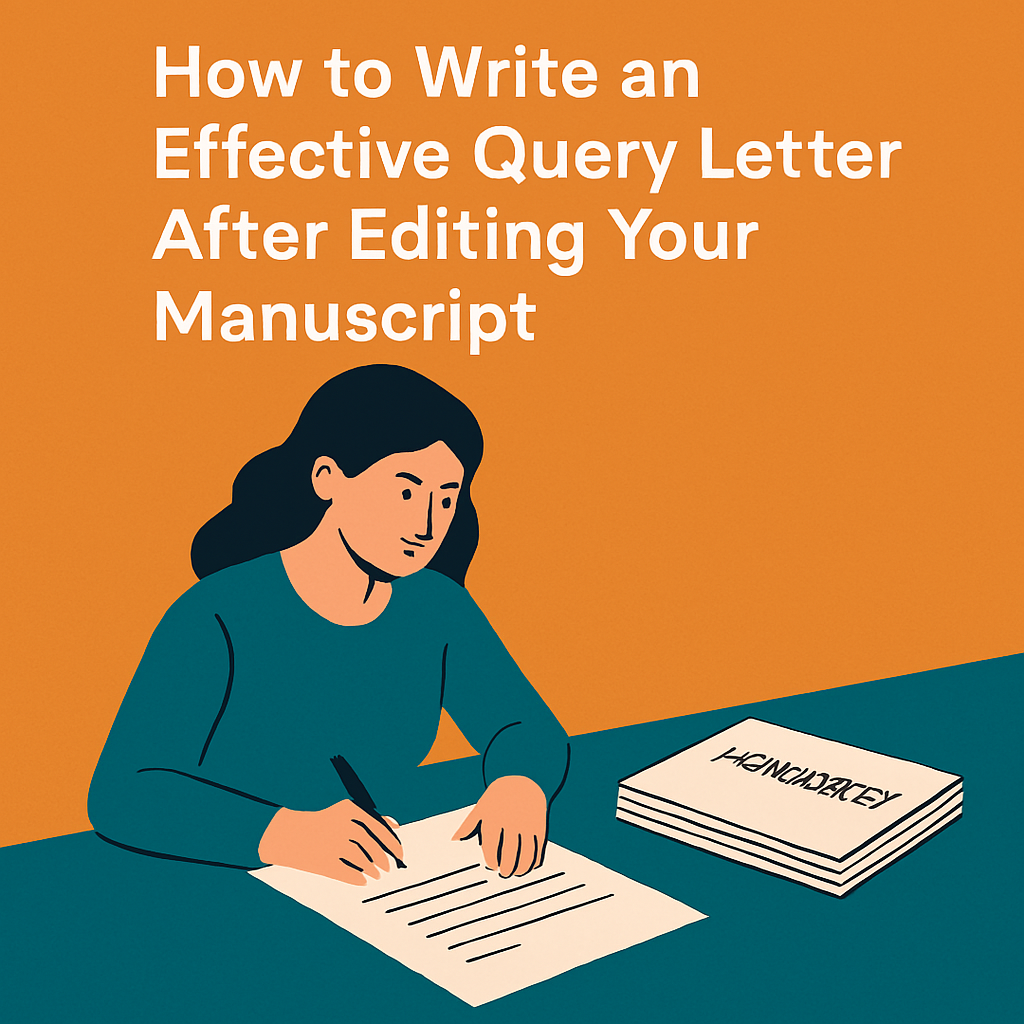

Introduction: The Power of a Polished Manuscript and a Winning Query
Your manuscript is finally professionally edited—congratulations! However, finishing copy edits is only the beginning when it comes to getting your book traditionally published. A query letter is your golden ticket to capturing an agent’s attention or impressing an acquisition editor.
But how do you craft a compelling query letter, especially after investing so much time perfecting your manuscript? This in-depth guide shows you how to leverage a polished book to create a query letter that sets you apart.
Internal Link: Query Letter & Agent Pitch Services – Need more help drafting a perfect query letter?
Note: Even your query letter should be error-free, so consider using our Proofreading Page for a final check on your letter before sending it out.
- Step 1: Ensure Your Manuscript Is Truly Polished
- Step 2: Understand the Purpose of a Query Letter
- Step 3: Essential Elements of a Query Letter
- Step 4: Nailing the Hook Paragraph
- Step 5: Writing a Brief Synopsis
- Step 6: Highlight Your Author Bio
- Step 7: The Importance of Proofreading Your Query Letter
- Step 8: Common Pitfalls to Avoid
- Step 9: Final Steps: Polish & Submit
Step 1: Ensure Your Manuscript Is Truly Polished
Before you write your query letter, confirm your manuscript is in its best possible shape. Agents are busy professionals—they can quickly detect whether a book has undergone thorough editing.
- Copy Editing & Line Editing: Make sure grammar, punctuation, and style are consistent.
- Developmental Feedback: Confirm your story structure and pacing are solid.
- Final Proofreading: Even after copy edits, have someone proofread for lingering errors—small typos can harm your credibility.
Why a Polished Manuscript Matters
- First Impressions: Agents often read the query letter first, but they’ll glance at sample chapters. If your writing isn’t clean, they might pass.
- Professionalism: A well-edited manuscript shows you’re serious about the craft, building trust with agents.
- Efficiency: Agents can focus on your story’s potential rather than being distracted by mistakes.
Pro Tip:
If you haven’t already, visit Proofreading Page for final error-checking. Even minor issues can diminish your professional image.
Step 2: Understand the Purpose of a Query Letter
A query letter is your elevator pitch—a concise, one-page document that piques an agent’s interest, prompting them to request sample chapters or the full manuscript.
Key Functions of a Query Letter
- Hook the agent with an attention-grabbing premise.
- Highlight the essence of your story—genre, word count, target audience.
- Showcase your voice and writing style succinctly.
- Prove you’ve researched the market and understand the agent’s submission guidelines.
Step 3: Essential Elements of a Query Letter
While query letters vary by genre, a few core components remain standard:
- Salutation: Address the agent or editor by name, showing you’ve done your homework.
- Hook Paragraph: Introduce your novel or nonfiction concept with a compelling opening line—why should they care?
- Brief Synopsis: Summarize main characters, conflicts, and stakes in one or two paragraphs.
- Author Bio: Highlight relevant credentials (awards, writing experience, or a personal connection to the subject).
- Closing & Thank You: Express gratitude and confidence, inviting them to request a full or partial manuscript.
Pro Tip: Keep it under 400 words. Agents often have limited time and appreciate brevity.
Step 4: Nailing the Hook Paragraph
Your hook paragraph is the make-or-break moment. Here, you must intrigue the agent enough to keep them reading:
- Focus on Conflict or Unique Angle: For fiction, highlight the main character’s dilemma. For nonfiction, identify the problem your book solves.
- Match Tone to Genre: A lighthearted romance might start with a charming anecdote, while a thriller might begin with an urgent scenario.
- Stay Authentic: Agents can sense forced drama. Let your natural voice shine through.
External Resource: Jane Friedman’s Guide to Query Letters (Authority on publishing)
Step 5: Writing a Brief Synopsis
In one to two paragraphs, convey the core conflict, main characters, and emotional stakes:
- Introduce Protagonist: Show their goal, motivation, and what’s at risk.
- Outline Major Conflict: Summarize the central tension or challenge without revealing every subplot.
- Hint at Resolution: Indicate the story’s direction but avoid spoilers.
Note: This is not a full synopsis. Agents just want a taste of your narrative arc.
Step 6: Highlight Your Author Bio
Your author bio helps agents understand your background and why you’re qualified to write this book. For fiction, emphasize writing-related experiences or accolades. For nonfiction, underscore expertise in your subject.
- Relevant Publications: Mention magazine articles, guest posts, or short stories in reputable outlets.
- Professional Affiliations: Are you a member of Writers’ Guild or any relevant groups?
- Awards & Recognition: Did your short story win a competition?
Tip: Keep it short; focus on what truly boosts your credibility.
Step 7: The Importance of Proofreading Your Query Letter
A query letter filled with typos or grammatical errors can undermine all your hard work. Agents assess your professionalism and writing ability through your letter, so make sure it’s spotless.
Final Query Letter Check (H3)
- Grammar & Punctuation: Even small errors can be off-putting.
- Conciseness: Every word should serve a purpose.
- Consistency in Tone & Style: Reflect your book’s genre and voice.
Internal Link: Proofreading Page – Let professionals ensure your query letter is error-free.
Step 8: Common Pitfalls to Avoid
- Excessive Length: A query letter is not a detailed synopsis—keep it short (around 300-400 words).
- Generic Salutation: Personalize your letter to the agent or editor.
- Overhyping: Avoid grand claims like “This will be the next bestseller!” Let the story speak for itself.
- Lack of Market Awareness: Show that you know where your book fits in the market.
- Ignoring Submission Guidelines: Each agent has specific instructions. Not following them can lead to an instant rejection.
Step 9: Final Steps: Polish & Submit
Before emailing your query letter:
- Re-check Agent Submission Guidelines: Some agents want a one-page query with 5 sample pages, others prefer a synopsis attached.
- Format Professionally: Clear subject lines, polite greetings, and correct agent contact details.
- Attach or Paste Sample Pages: If required, ensure they are also free of typos—your manuscript’s first impression matters.
Internal Link: Query Letter & Agent Pitch Services – Get expert help drafting or reviewing your letter before sending it out.
Conclusion: Crafting a Query Letter That Opens Doors
A polished manuscript deserves an equally polished query letter. By refining each element—hook, synopsis, author bio, and style—you’ll show agents or editors you’re a professional worth their investment.
Remember: Even a query letter should be proofread. Visit our Proofreading Page to ensure no pesky errors linger. Finally, confirm your final pre-publishing steps with our Final Pre-Publishing Checklist.

